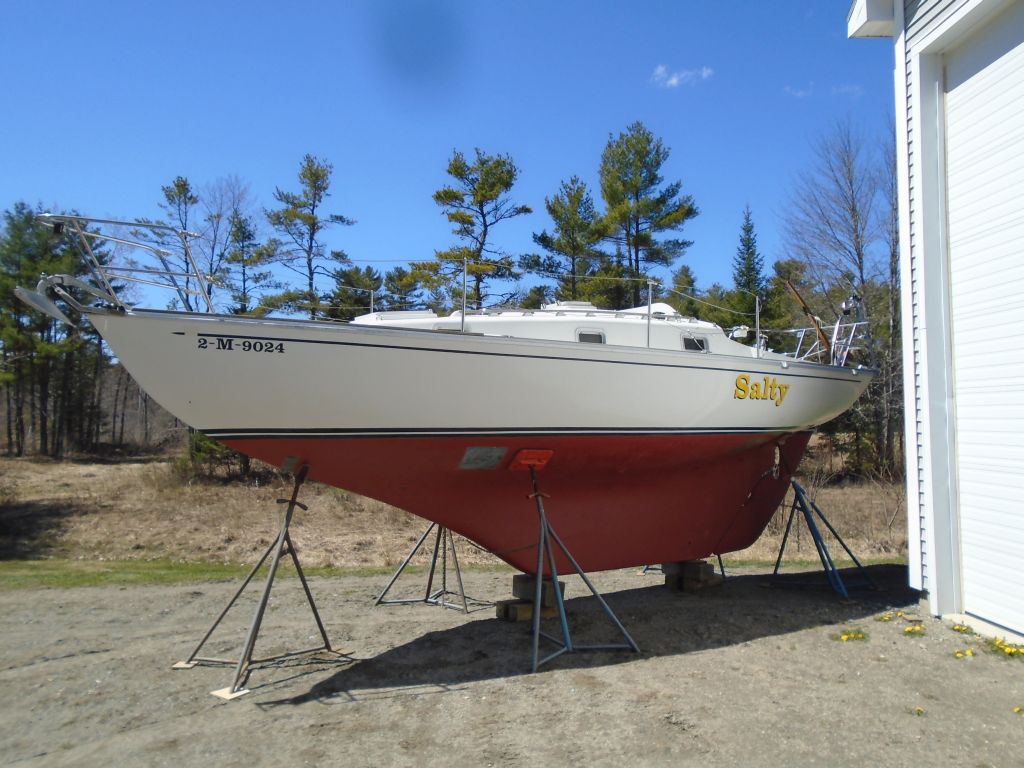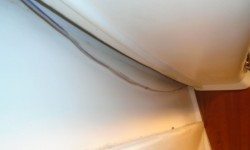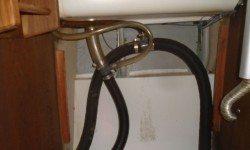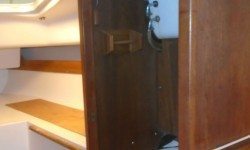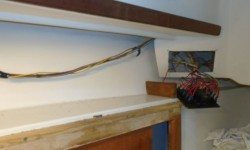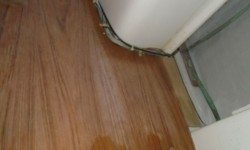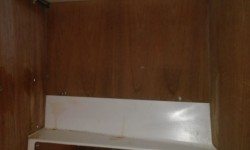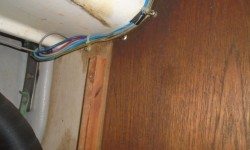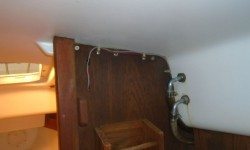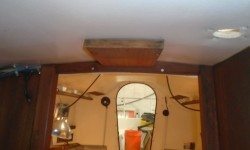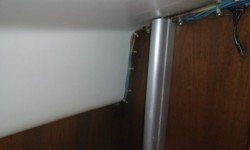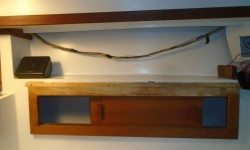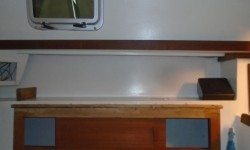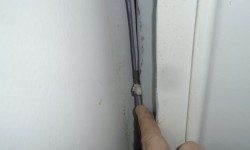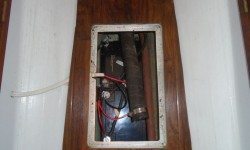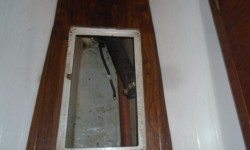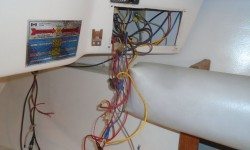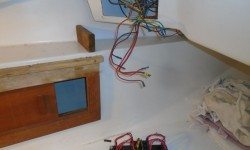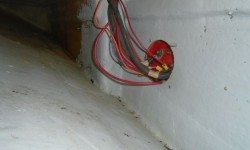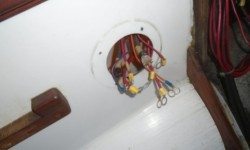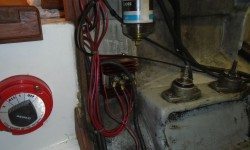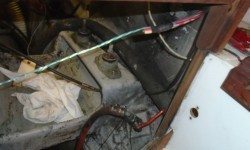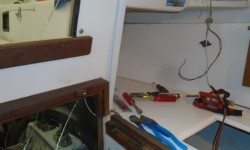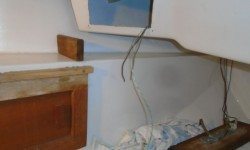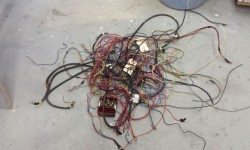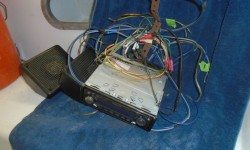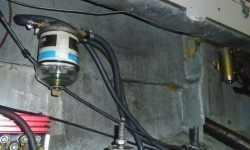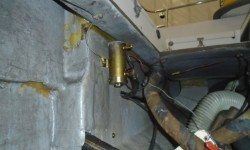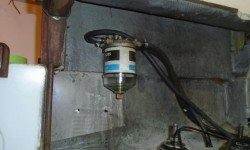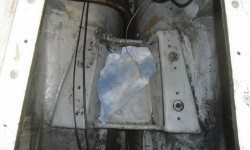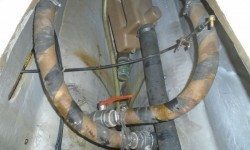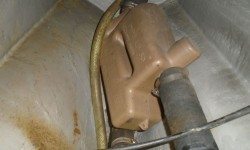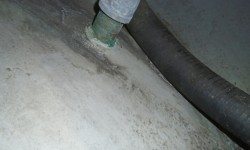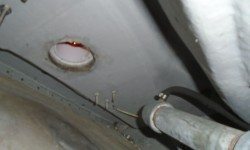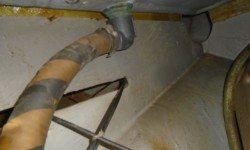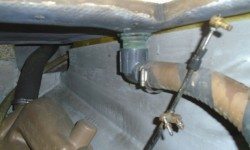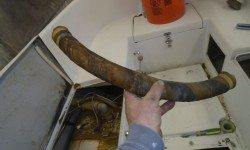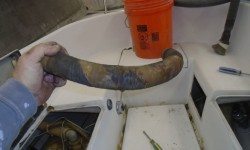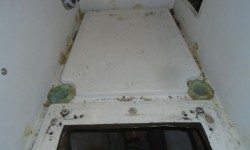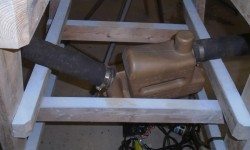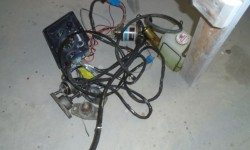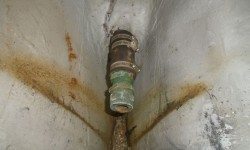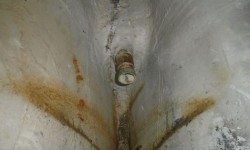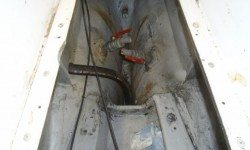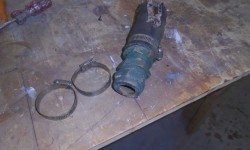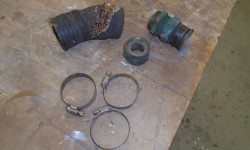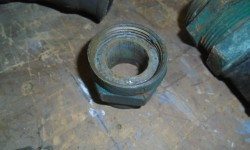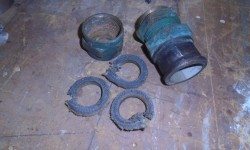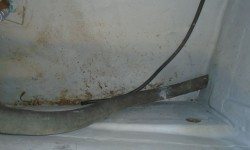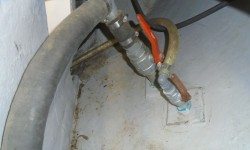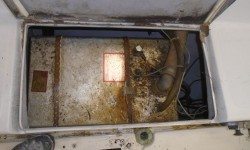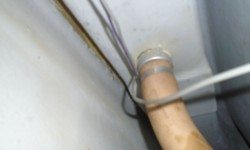March 1, 2016
Salty 6
Tuesday
To access the wiring for removal, I had to remove several interior panels and cover plates to expose the wiring along the underside of the deck and, in the head, behind vertical interior panels. These panels were easily removable. The port wire chase cover in the forward cabin was already missing when I started, but there were no wires in that area anyway. In the head, I also removed the bifold door to improve access throughout the process, and some additional trim pieces that covered the wiring in the passageway and at the mast step.
In the main cabin, I removed the padded backrests from the tops of the side cabinets, which improved access and would prevent any damage to these pieces during the work. They were secured with three screws from above and were easy to remove.
With access now available everywhere, I methodically removed all the existing wiring and wire tie mounts, most of which had been installed in pre-fabricated wiring harnesses at the factor and before the hull and deck had been mated. One wire tie mount in the forward cabin was attached to the now-inaccessible side of the deck molding, without even a fingertip’s room outside of the screw head now that the molding wasn’t conveniently upside down on some shop floor. That screw was destined to be there in perpetuity.
At the after ends of the wiring runs, at the twin panels on each side of the cabin, I removed the old panels and then most of the nearby wiring, leaving a few things in place that would remain intact for now, namely the wiring for the depthsounder and knotmeter on the port side, and compass light to starboard. Where wires ran from the engine room into each of these panel areas, I led in messenger lines when I pulled out the old wiring, as this would make running something new easier through the tight wire chases located in gaps behind or within the interior liner. Eventually, I removed most of the wiring, including battery cables and related components, all of which made a fair-sized pile.
At first I’d been unclear whether or not to remove an existing (and fairly modern) stereo, located in the port hanging locker, and speakers, but with clarification from the owner I went ahead and removed these.
I worked my way aft through the engine room, removing the old engine mounts, fuel filter, fuel pump, fuel lines, and wiring harness and panel. This cleared enough space for me to continue with the exhaust system, which I removed mostly intact. The connection at the transom was through a stick-built galvanized pipe riser/gooseneck, and access was tight, particularly since the hose was pressed tightly against the hull as the gooseneck provided virtually no clearance. With old, heat-welded, wire-reinforced hose, I had to cut the hose with difficulty below the gooseneck, leaving a bit of the hose still stuck in place for now (I’d have to remove that later, but broader strokes for now). While I was in there, I removed the old and cracked scupper hoses and anything else I could.
This mostly cleaned out the engine room, exposing the stuffing box, which I removed next. The hose must have rotated at some point, because the three clamps had ended up in about the most challenging orientation for removal (and even casual factory installation wouldn’t have done this for any reason). Once I had the clamps loose, which wasn’t too difficult despite the awkward orientation (fortunately), I found that the hose was impossible to twist off the stern tube, and I had to saw through it with a sharp knife, exposing the wire reinforcements that I could then cut one at a time to finally allow me to remove the hose. The bronze packing box was in good condition, and even the old rings of packing were generally sound within, though it would be replaced with new packing regardless.
Meanwhile, I removed the suction and discharge hoses for a manual bilge pump, as well as an abandoned discharge from a nonexistent electric pump (the switch had been in place, but no signs of the pump or wiring in the bilge). These photos obviously show the plumbing before removal.
The fuel tank, located in the starboard cockpit locker, prohibited access to a waste pumpout hose, as well as its own fill and vent hose, which were located in the deck above and were impossible to see or easily reach (other than by remotely-held camera). The condition of the fuel in the tank was of concern given the installation of a new engine, and I’d be assessing options and alternatives for what to do with the tank and fuel in the days to come. Recalling the challenges in removal from a project years back on another Contessa 26, I was not enthused at the prospect of removing this tank either, but more on this later. For now, all I did was document the beginning condition of things, and I’d soon be delving into this in more detail.
Total time billed on this job today: 7.5 hours
0600 Weather Report:
20°, clear, breezy. Forecast for the day: Sunny, 33°


